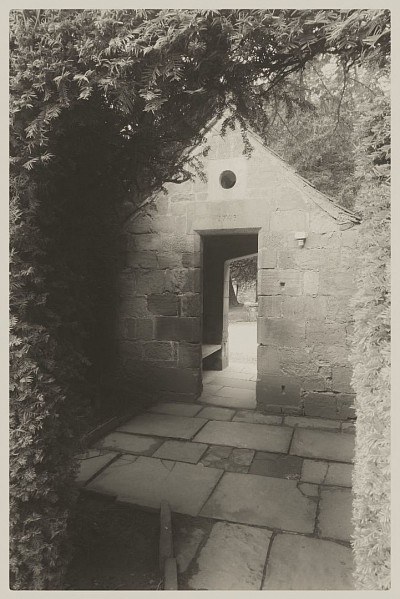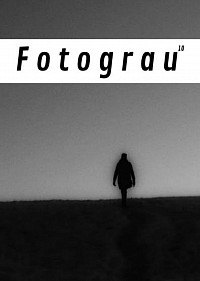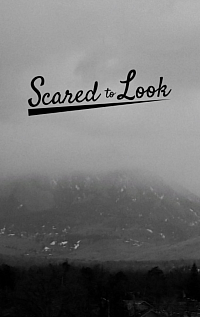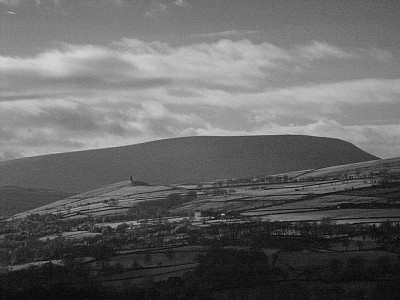Studio 6x4's blog
Excerpt from The Nash Suitcase (2025)
The Nash Suitcase is a new book of photographs and poems by Studio 6x4. Excerpts are being featured here in the blog and full details can be found on the Books page.
Poems sit alongside the photographs that inspired them and the book opens with our first excerpt, titled Escape Route In A Dream-World...
Geometric, mind-made,
Semi-unnatural forms
Lead my eye away,
Through layers and frames,
Openings and enclosures,
To threat before escape,
Which all alludes to a dream
News
Studio 6x4 is pleased to announce the publication of its tenth issue of Fotograu.
To mark the passing of this milestone, the studio has made some changes. The zine's format and cover design have been revised - just a little - and there are new ways to get a copy.
Fotograu's pocketable size has been enhanced with an even more compact A6 format. The front cover has a new banner and the back cover has more information about the publication and Creative Commons licence.
As usual, you can download a free copy of the latest issue from the Zines page, but now you can have it - and every subsequent issue - emailed to you for free by subscribing via the Contact page. In addition, if you prefer a proper printed copy, you can now purchase one at cost (Studio 6x4 takes no profit) from Mixam, who also provide a full flip-book preview that you can read for free.
Hail the Sphere. Hail Fotograu 10.
Interview
Scared to Look (Studio 6x4, 2024) is a book of black and white photographs taken in the counties of Boulder, Weld and Larimer, Colorado, USA. The book reveals forms of beauty in unlikely places, hums with a deep sense of unease and invites reflection - both outward and inward. The title refers to a quotation from the late American photographer and teacher, Minor White.
Interviewer: This is an interesting little book - pocket sized...
Author: Yes, that's Studio 6x4. They do the pocketbook size because it's more affordable and accessible. I like to imagine someone carrying a dog-eared copy around in their pocket.
I: Before I ask about the title, can you tell me a little about the intention behind Scared to Look?
A: My intention is always to take photographs and I do it for its own sake. But I do like making books and zines, so that's always in the back of my mind. It's just "take photos, make books".
I: And that's how Scared to Look came about?
A: That's right. Soon after I landed [in Colorado] I became fascinated by the trees. I think it began with the cottonwoods. I'd never seen them in Spring before, so I'd never seen them bare like that - only in Winter in the snow - and they looked so ancient and eerie. I found them in all sorts of situations, displaying different forms of beauty, so I took photographs, but the trees were often in precarious situations facing urban development, lack of care and just plain abuse, so I started to feel uneasy about what I was seeing.
I: It sounds like something changed along the way.
A: It did. My uneasiness started to affect the photographs. It wasn't just the trees I was noticing anymore. It was their environment and their context.
I: So trees began as the object in your photographs and became the subject of your photographs.
A: Yes, but also their situation and relationship with us and how they indicate a bigger problem. So the book is really asking How did it come to this and Where are we heading, in the broadest terms. Trees are abused and destroyed - we know that - but even the way they're planted is demeaning. They look so spartan, lonely and vulnerable. Just here and there to decorate tarmac and concrete with a bit of green. Easily removed if required. And it reflects a general attitude we've had for a long time and seems hard to change.
I: I think we're coming to the title, aren't we? Should we be scared to look at these images, because of what they say about us?
A: Well, you've sort of hit the nail on the head there. I was in this apartment building that had a shelf of art books in the corridor and there was a copy of the Aperture book about Minor White. I was aware of him, but didn't know much about him, and the book looked interesting, so I borrowed it. He was quite the philosopher, as well as being a great artist and teacher. There are some great quotations in the book and one of them gave me the title... This is the one:
"Self-discovery through a camera? I am scared to look for fear of discovering how shallow my Self is! I will persist however... because the camera has its eye on the exterior world. Camera will lead my constant introspection back into the world..."
I: And what struck you about that quotation in particular?
A: Remember I'd just experienced that change in the way I saw the trees - from positive to negative - and through the camera I'd basically turned a celebration into a lament. I was wondering whether my photographs were saying more about my own introspection than the exterior world I was observing. So I chose Scared to Look as the title because it describes our reluctance to reflect inwardly and outwardly for fear of what we may see. But it's true that a camera can lead you back into the world - literally and figuratively - and I use mine that way, I think.
I: That's the perfect way to conclude this interview - thank you.
A: You're welcome.
Photopoem: Towered Hill
Towered Hill,
Monumental failure of a successful man,
Whose vision was truncated, shortsighted,
Frustrated by his own dominion unbending.
And there, a Towering Hill, unadorned -
Too sublime to submit or subject
To the will of one myopic man -
Standing back, still flat and black.
Here no monument, yet, to a more monstrous success,
No landmark so ugly to address
That if once beheld can never be again,
Only scorched in the eyes of the dead.
References: Wikipedia, Clayton (2007)
Comments
Comments on the blog are welcomed and can be sent via the Contact form.




